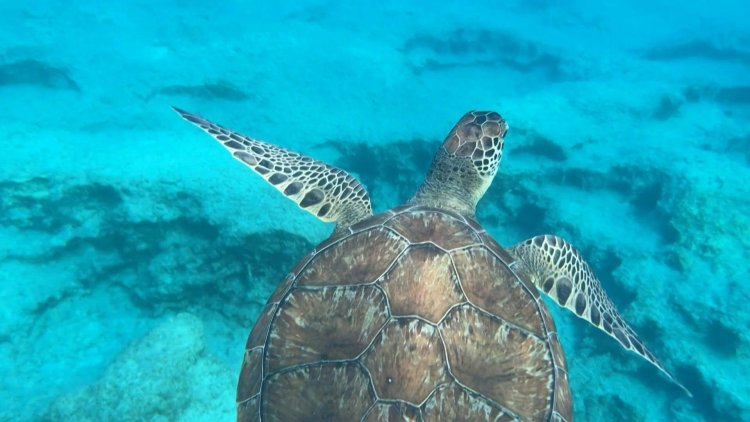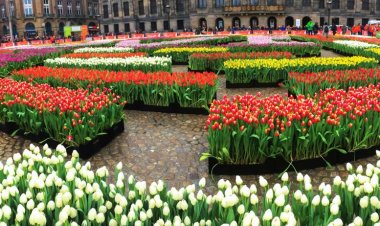Green turtle glides through glistening waters of Cyprus

A green turtle (Chelonia Mydas) is spotted near a sandy cove on the eastern coast of Cyprus, close to the bustling town of Protaras. The Mediterranean island of Cyprus is considered the third most important location for the reproduction of turtles after Greece and Türkiye.
The green turtle is one of the largest sea turtles and the sole herbivore among the different species.
These turtles are primarily found in tropical and subtropical waters and migrate long distances between feeding grounds and the beaches from where they hatched.
They graze on seagrasses and algae, maintaining and enhancing the productivity of seagrass beds.
Seagrass consumed by green turtles is quickly digested and becomes available as recycled nutrients to the numerous plant and animal species that make up the seagrass ecosystem.
As a result of human activities, sea turtle populations have declined throughout the world to the extent that all the species have been declared by the International Union for the Conservation of Nature (IUCN) as Vulnerable or Endangered.
All sea turtle species are now banned from commerce between signatory countries by the Convention on International Trade in Endangered Species of Wild Fauna and Flora (CITES), which Cyprus has ratified. In addition, sea turtles and their eggs have been protected by Cyprus law (Regulations made under the Fisheries Law, Chapter 135) since 1971.















